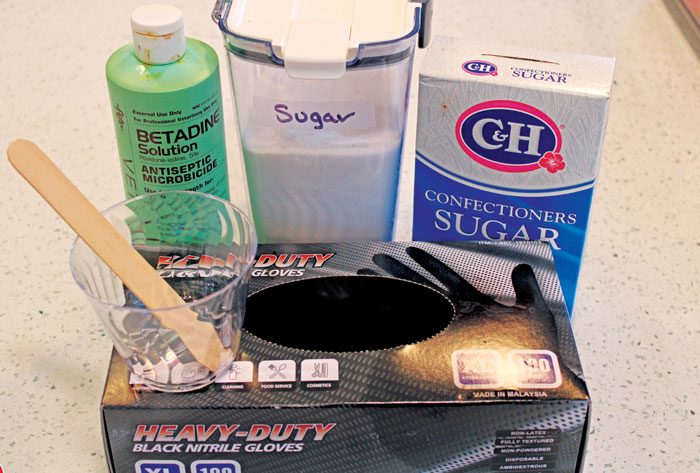American Farriers Journal
American Farriers Journal is the “hands-on” magazine for professional farriers, equine veterinarians and horse care product and service buyers.

All Images: Shane Westman
Wounds, cracks, or openings in the hoof capsule or sole due to abscess, hoof failure or puncture can be difficult to manage in the horse’s normal living environment. The wound quickly can become contaminated with dirt and fecal matter that are laden with opportunistic microbes looking to infect the area. The diverse bacteria causing infection are all part of either the normal flora of the hoof, the gut, or the soil of the horse’s living environment.1
Numerous antibacterial products are available through veterinarian prescription or over the counter. However, many of the treatments available have not undergone more than limited scientific scrutiny. Determining the precise contents of many of these products can be difficult to figure out.2
Topical treatments containing sugar have been used for wound care for centuries. Dr. Richard A. Knutson, a Greenville, Miss., orthopedic surgeon, reinvestigated wound management by mixing granulated sugar and povidone-iodine into a slurry treatment in the 1980s.3 The mix he created was not only non-toxic, but effective and simple to make. He called the poultice sugardyne — sugar for its most abundant component and dyne for power (as in dynamite, dynamo and dynamic)…